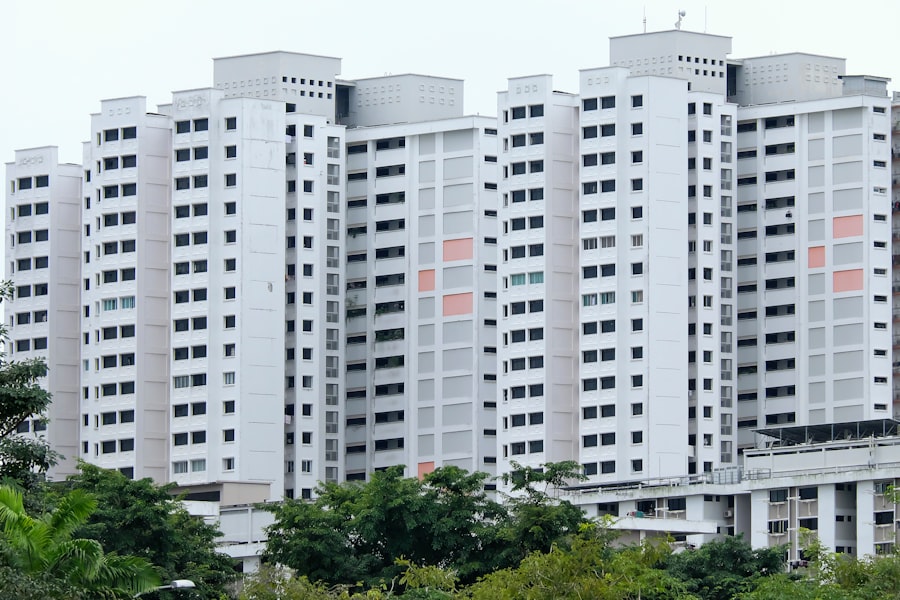As you navigate the complexities of modern living, one issue that has become increasingly prominent is the rising cost of rent. In many urban areas, the price of housing has surged, leaving many individuals and families grappling with the challenge of affording a place to live. This phenomenon is not merely a local issue; it reflects broader economic and social trends that are reshaping cities around the world.
Understanding the factors behind these rising rents is crucial for anyone looking to make informed decisions about their housing situation. The implications of rising rent extend beyond mere numbers on a lease agreement. They affect your quality of life, your financial stability, and even your ability to remain in your community.
As you delve into the various elements contributing to this trend, you will uncover a complex web of economic forces, demographic shifts, and policy decisions that all play a role in shaping the rental landscape. By examining these factors, you can better understand the challenges you face and explore potential strategies for managing your housing costs.
Key Takeaways
- Rising rent is a growing concern for many individuals and families, impacting their financial stability and quality of life.
- Economic factors such as job growth, wage increases, and overall economic prosperity contribute to rent increases in many urban areas.
- Population growth and urbanization lead to higher demand for housing, driving up rent prices in popular cities and neighborhoods.
- Gentrification, the process of renovating and improving urban areas, often leads to displacement and higher rent prices for existing residents.
- The balance between housing demand and supply, as well as property development and investment, significantly influences rent prices in a given area.
Economic Factors Contributing to Rent Increases
One of the primary drivers of rising rent is the overall state of the economy. When the economy is thriving, more people are able to afford housing, which increases demand. This heightened demand often leads landlords to raise rents, capitalizing on the willingness of tenants to pay more for desirable living spaces.
As you consider your own rental situation, it’s essential to recognize how economic indicators such as employment rates and wage growth can directly impact your housing costs. Additionally, inflation plays a significant role in rent increases. As the cost of goods and services rises, landlords often adjust their rental prices to keep pace with inflation.
This means that even if your income remains stable, you may find yourself paying a larger portion of your earnings toward rent. Understanding these economic factors can help you anticipate changes in your rental market and prepare for potential increases in your housing expenses.
Population Growth and Urbanization

Population growth is another critical factor influencing rent prices. As more people flock to urban areas in search of job opportunities and a vibrant lifestyle, the demand for housing intensifies. This influx can lead to a competitive rental market where available units are quickly snapped up, driving prices higher.
If you live in a city experiencing significant population growth, you may have already felt the pressure of increased competition for rental properties. Urbanization also contributes to rising rents by transforming neighborhoods into desirable locations for living and working. As cities expand and develop, certain areas become hotspots for young professionals and families alike.
This transformation often leads to higher rents as landlords recognize the potential for profit in these burgeoning neighborhoods. Being aware of these trends can help you make informed decisions about where to live and how to budget for your housing costs.
Impact of Gentrification on Rent Prices
| City | Year | Median Rent Price | Percentage Increase |
|---|---|---|---|
| New York City | 2010 | 1500 | 20% |
| San Francisco | 2015 | 2500 | 30% |
| Seattle | 2018 | 1800 | 25% |
Gentrification is a complex process that can significantly impact rent prices in urban areas. As neighborhoods undergo revitalization, often driven by an influx of wealthier residents, property values tend to rise. This can lead to increased rents that may displace long-time residents who can no longer afford to live in their homes.
If you find yourself in a gentrifying area, it’s essential to understand how these changes can affect your housing situation. While gentrification can bring positive developments such as improved infrastructure and amenities, it often comes at a cost. The cultural fabric of neighborhoods can shift dramatically, leading to tensions between new and existing residents.
As you navigate these changes, consider how they might influence your own living situation and what steps you can take to secure affordable housing amidst rising rents.
Influence of Housing Demand and Supply
The balance between housing demand and supply is a fundamental aspect of the rental market that directly affects prices. When demand outstrips supply, landlords have the upper hand and can raise rents without fear of losing tenants. Conversely, when there is an oversupply of rental units, tenants may have more negotiating power, potentially leading to lower rents.
Understanding this dynamic is crucial for anyone looking to rent or invest in property. In many urban areas, a lack of affordable housing options has exacerbated the demand-supply imbalance. As new developments often cater to higher-income residents, lower-income individuals may find themselves priced out of the market entirely.
If you are searching for a rental property, being aware of local supply trends can help you identify opportunities and make informed decisions about where to focus your search.
Role of Property Development and Investment

Property development plays a significant role in shaping the rental landscape. Developers often target high-demand areas for new construction projects, which can lead to an influx of luxury apartments and condos that cater to wealthier tenants. While this may create more housing options overall, it can also drive up rents in surrounding areas as property values increase.
If you are considering moving into a newly developed area, be prepared for potential rent hikes as demand rises. Investment in real estate also influences rental prices. Investors seeking profitable opportunities may purchase properties with the intent of raising rents or renovating units to attract higher-paying tenants.
This trend can lead to increased competition for available rentals and further drive up prices. As you evaluate your own housing options, consider how investment trends in your area might impact your rental costs.
Effects of Government Policies and Regulations
Government policies and regulations can have a profound impact on the rental market. Rent control measures, for example, are designed to protect tenants from excessive rent increases but can also lead to unintended consequences such as reduced investment in rental properties or a decrease in available units. If you live in an area with rent control laws, it’s important to understand how these regulations might affect your housing situation.
On the other hand, policies aimed at increasing affordable housing supply can help alleviate some pressure on rising rents. Initiatives such as tax incentives for developers who build low-income housing or zoning changes that allow for more multifamily units can create more options for renters. Staying informed about local government actions can empower you to advocate for policies that support affordable housing in your community.
Impact of Inflation and Cost of Living
Inflation is an ever-present factor that influences rent prices across the board. As the cost of living rises due to inflationary pressures, landlords often feel compelled to increase rents to maintain their profit margins. This means that even if your salary remains stable, you may find it increasingly difficult to keep up with rising housing costs.
Understanding how inflation affects your financial situation is crucial for budgeting effectively. Moreover, inflation doesn’t just impact rent; it also affects other essential expenses such as groceries, transportation, and healthcare. As these costs rise, you may find yourself allocating a larger portion of your income toward basic necessities, leaving less room for discretionary spending or savings.
Being aware of these trends can help you make informed decisions about your finances and prioritize your housing needs accordingly.
Rental Market Trends and Patterns
As you explore the rental market, it’s essential to recognize emerging trends and patterns that could influence your housing choices. For instance, remote work has led many individuals to reconsider their living arrangements, with some opting for suburban or rural areas where rents may be lower compared to urban centers. This shift could create new opportunities for affordable housing outside traditional city limits.
Additionally, technology is reshaping how people search for rentals and interact with landlords.
Staying attuned to these trends can help you navigate the rental market more effectively and identify potential savings.
Social and Cultural Shifts Affecting Rent Prices
Social and cultural shifts also play a significant role in shaping rent prices. As societal values evolve, so too do preferences for certain types of living arrangements or neighborhoods. For example, there has been a growing emphasis on sustainability and community-oriented living in recent years, leading some individuals to seek out eco-friendly apartments or co-housing options that prioritize shared resources.
These shifts can influence demand in specific areas or types of housing, ultimately affecting rental prices. If you are attuned to these cultural changes, you may be able to identify emerging neighborhoods or housing styles that align with your values while also offering more affordable options.
Strategies for Managing Rising Rent Costs
As rising rents continue to pose challenges for many renters, developing effective strategies for managing these costs becomes essential. One approach is to consider negotiating your lease terms with your landlord; if you have been a reliable tenant, they may be willing to offer concessions rather than risk losing you altogether. Another strategy is exploring alternative living arrangements such as shared housing or co-living spaces that can significantly reduce individual rent burdens.
By being open to different types of living situations or locations, you may find opportunities that align with both your budget and lifestyle preferences. In conclusion, understanding the multifaceted factors contributing to rising rent prices is crucial for anyone navigating today’s rental market. By staying informed about economic trends, demographic shifts, government policies, and social changes, you can better position yourself to manage rising costs effectively while securing a living situation that meets your needs.
Rents have been increasing at an unprecedented rate, and several factors contribute to this trend. One significant reason is the imbalance between supply and demand in the housing market. As more people move to urban areas for job opportunities, the demand for rental properties has surged, outpacing the available supply. Additionally, construction costs have risen, making it more expensive to build new housing units.
